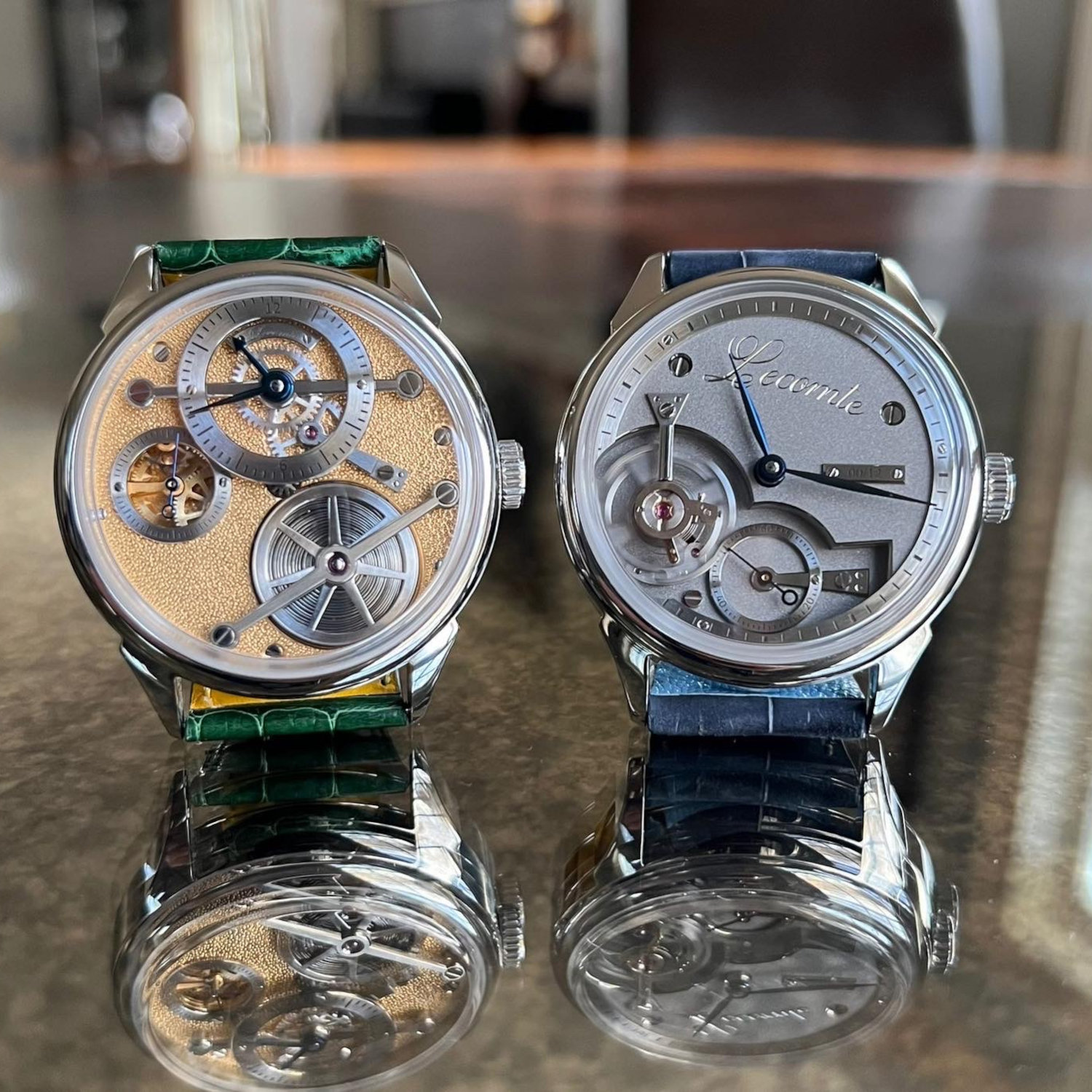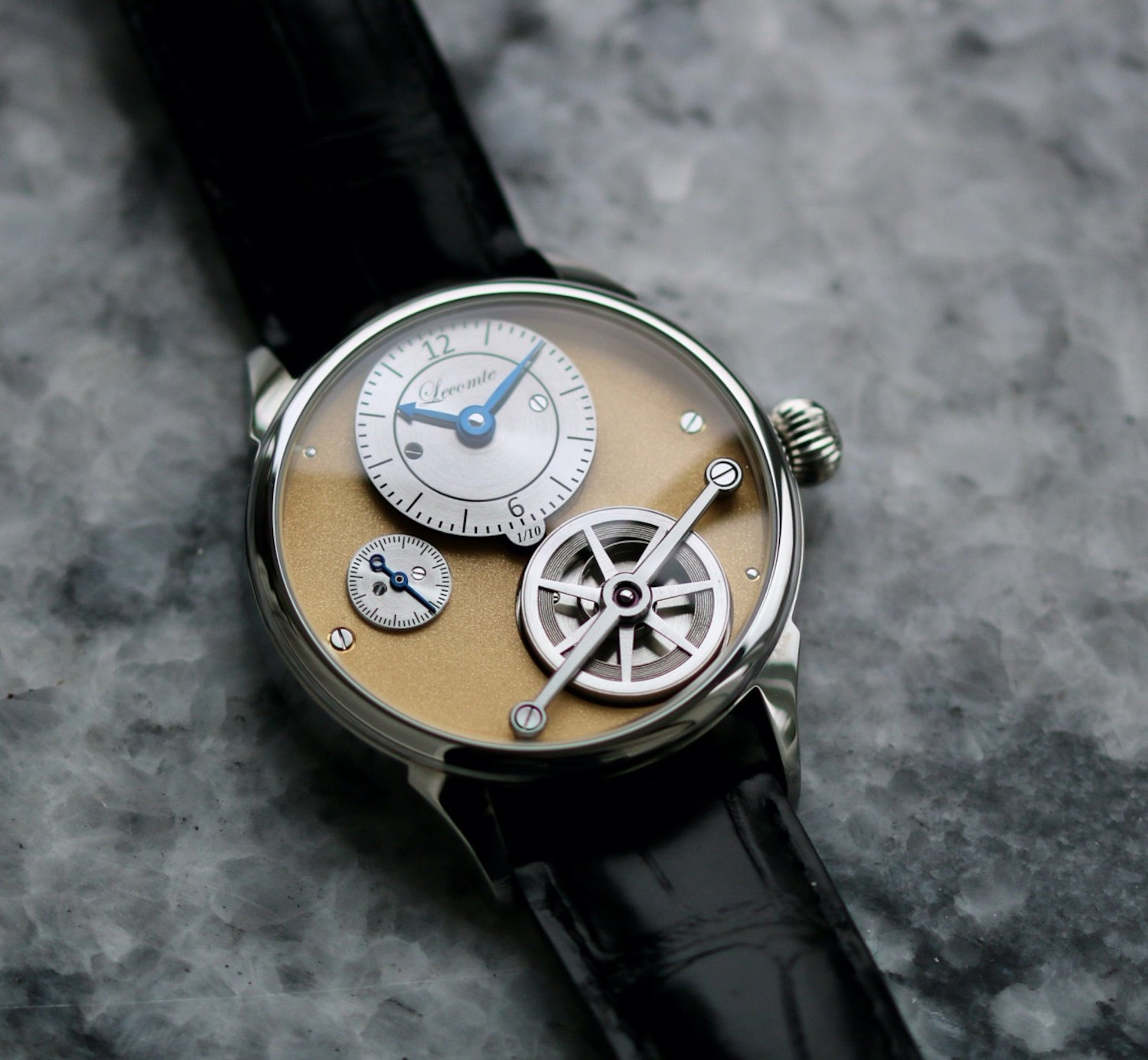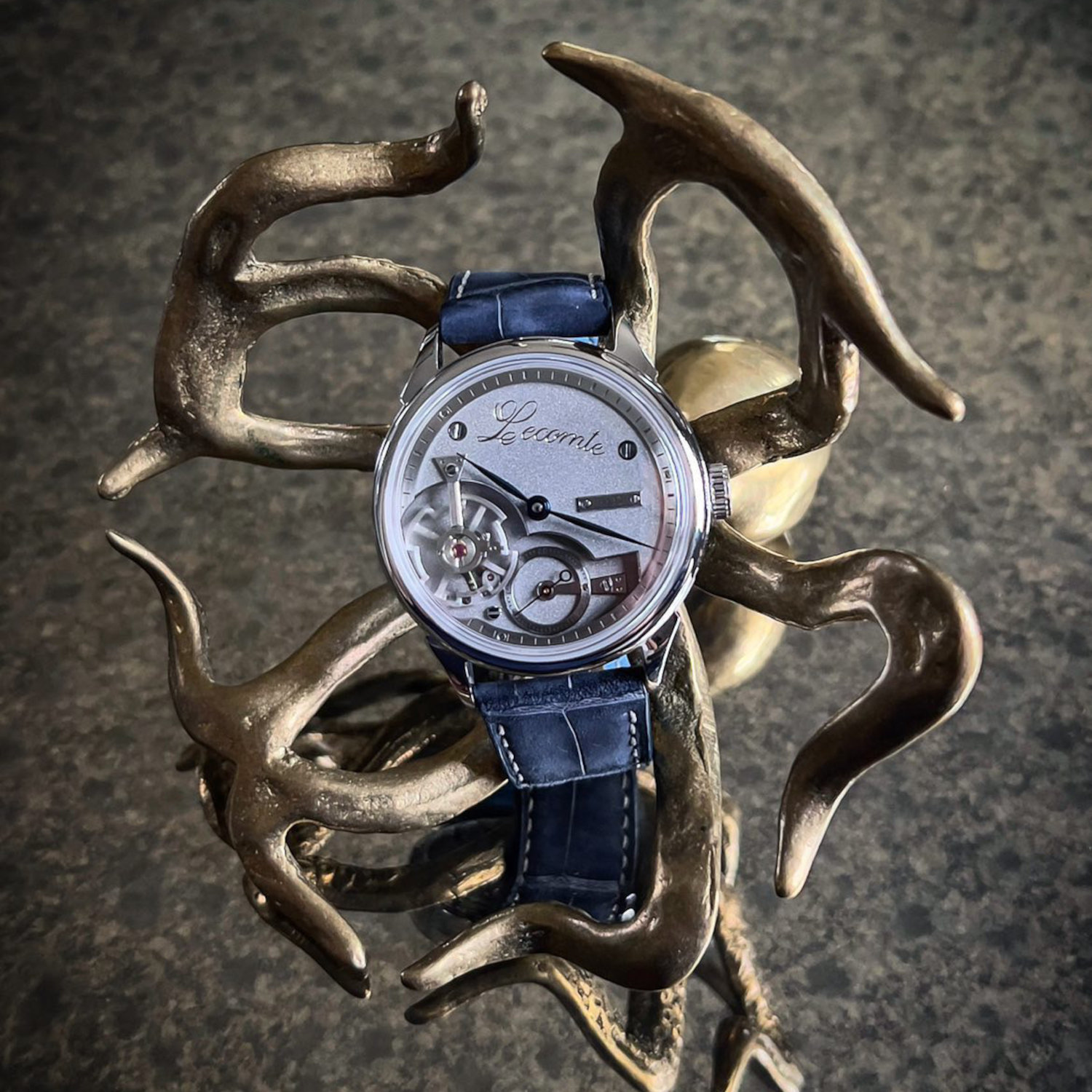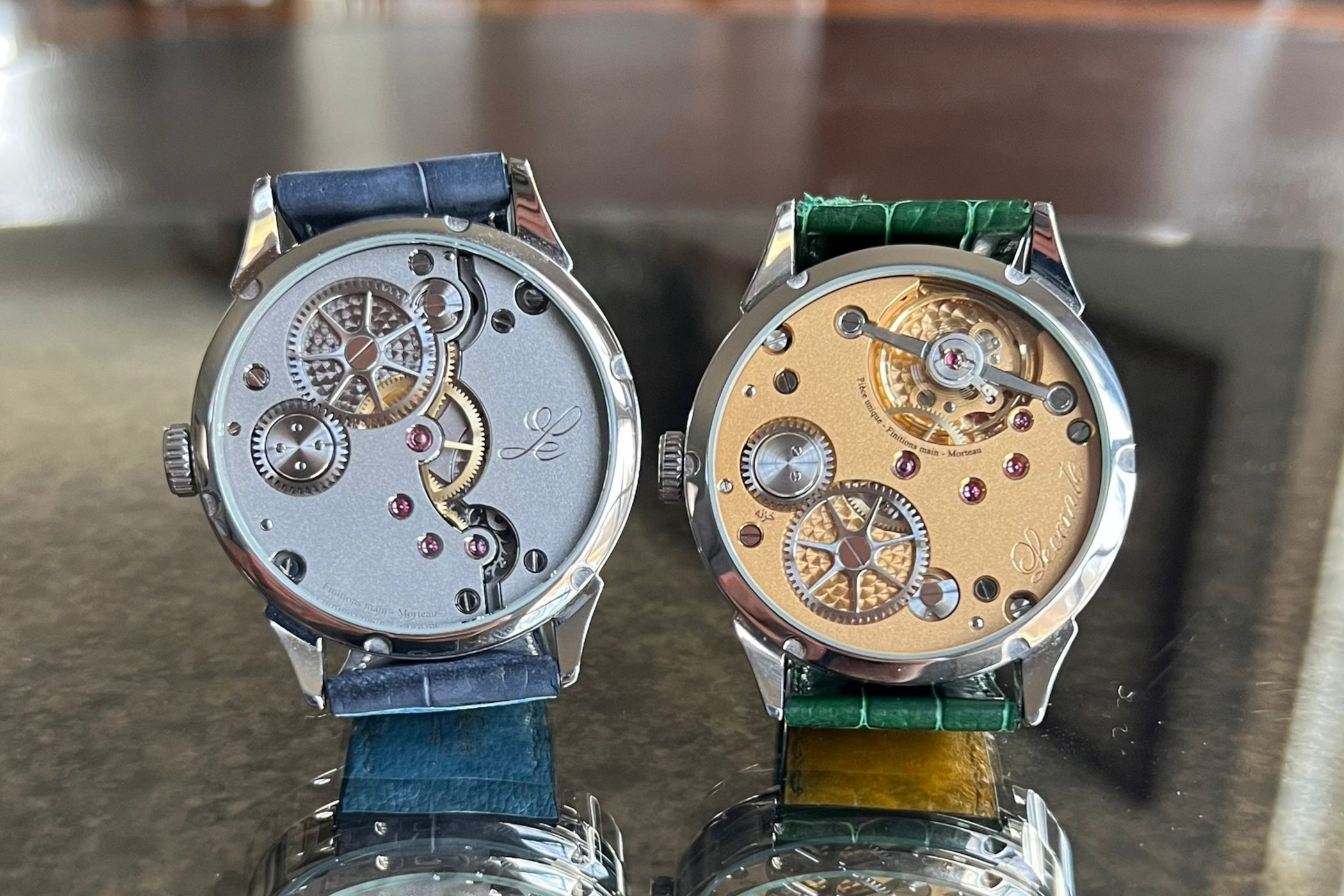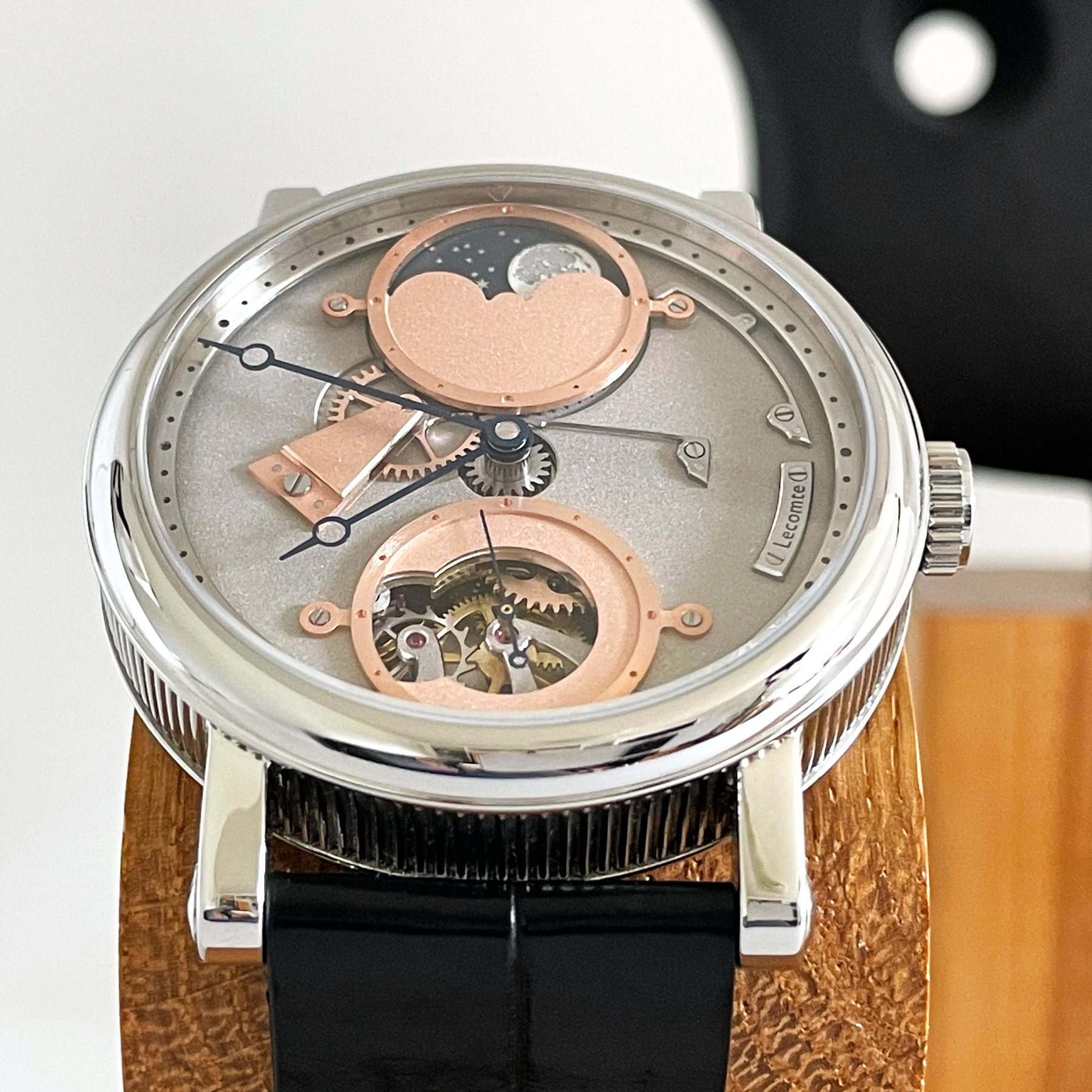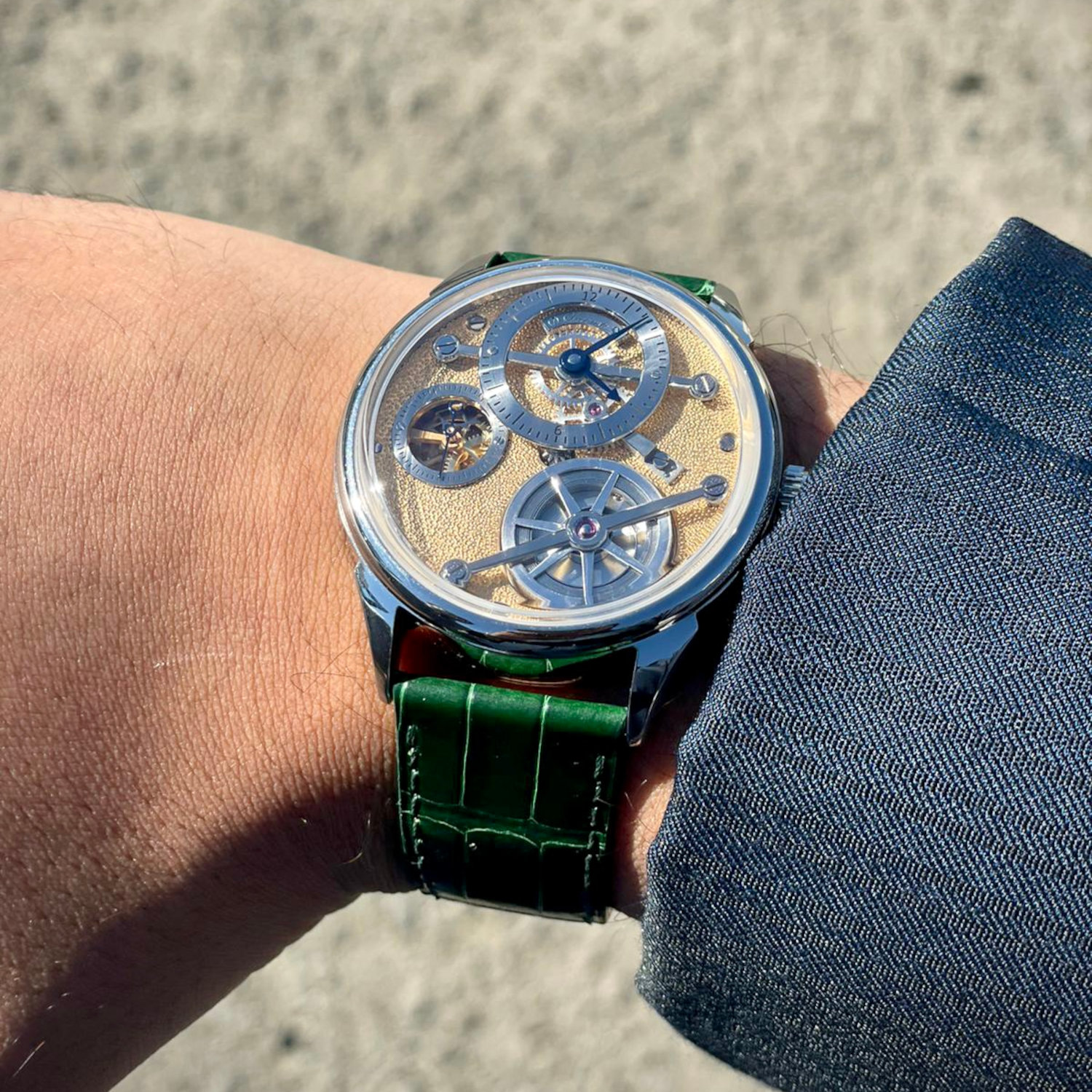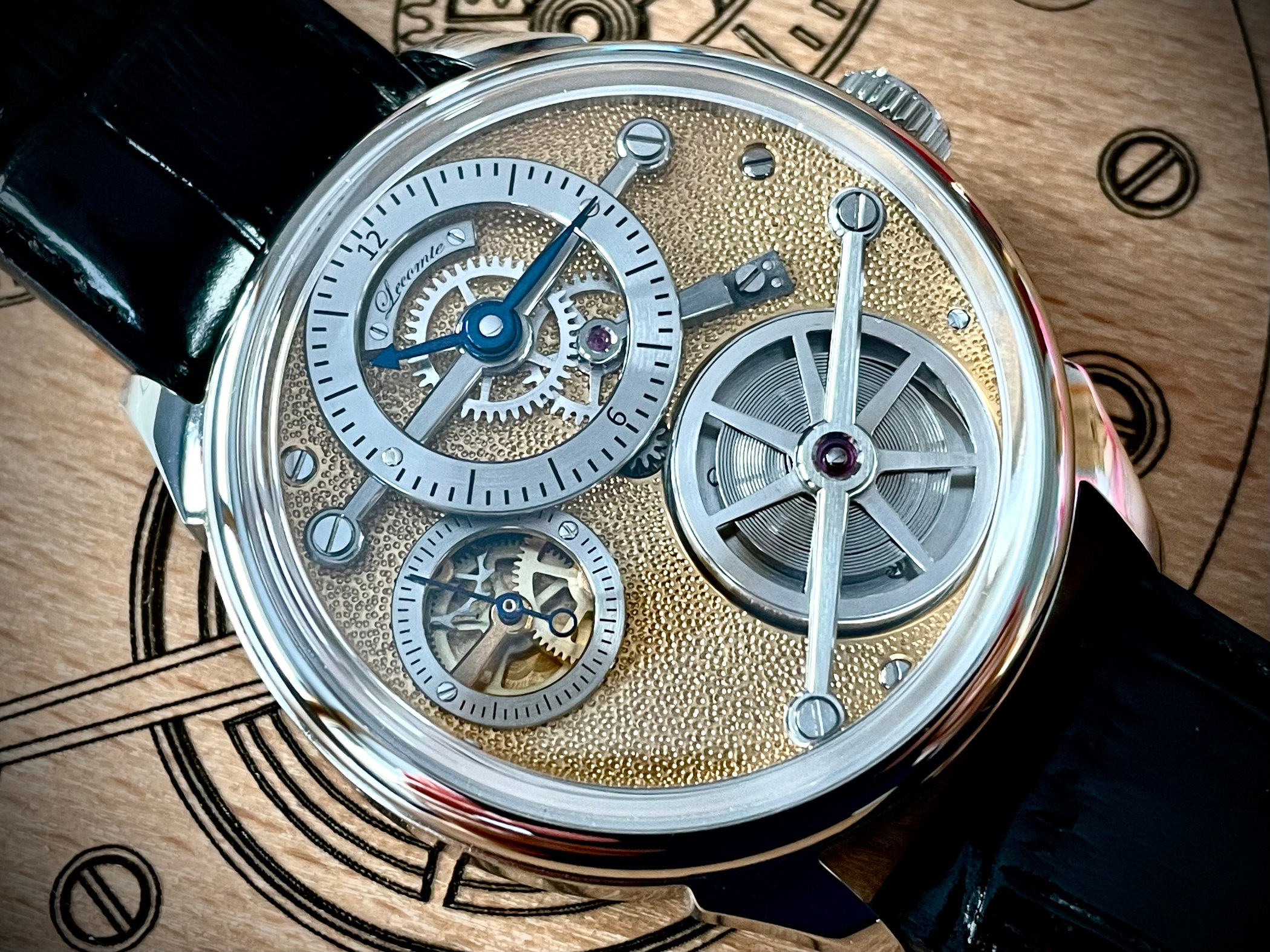Florent Lecomte, a Recently Discovered Gem of Independent Watchmaking
A teacher at the Lycée Edgar Faure institute of watchmaking now turns to making watches himself.
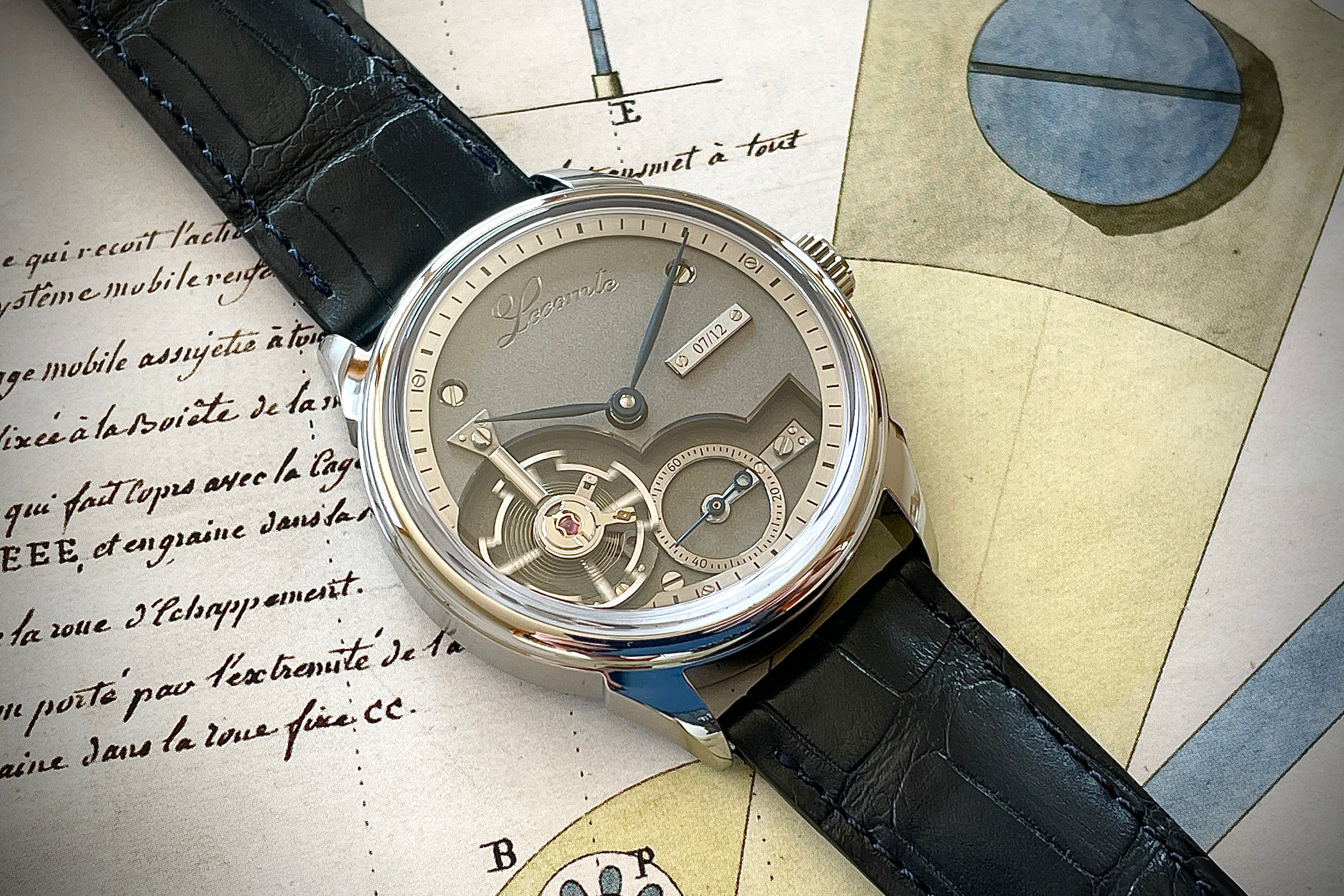
Throughout my years of working for MONOCHROME watches, I have seen architects, computer engineers, pharmacists and many others make a switch into watchmaking. People do this for varying reasons but one thing that always seems to be the case is sheer unbridled passion. Passion for traditional craftsmanship, passion for creating something out of nothing. This leads to the occasional discovery of new and intriguing watchmakers, such as Florent Lecomte. An industrial product designer turned watchmaking teacher turned independent watchmaker. Time to ask Florent some questions, and introduce you to this future star!
Robin Nooij, MONOCHROME – First off, could you briefly introduce yourself to our readers Florent?
Florent Lecomte, founder of Lecomte Watches – Sure I can. My name is Florent Lecomte and I live in Morteau, France. I am a teacher at the Lycée Edgar Faure in Morteau and work as an independent watchmaker for about two years.
How did you become a teacher at the Lycée Edgar Faure in Morteau, France? And how did you get involved in watchmaking?
After studying industrial product design, I became a high school teacher in this same discipline. I obtained my transfer to the Edgar Faure high school in Morteau in 2006. It was then that I discovered watchmaking, which was a revelation for me. I wanted to understand how a set of inert metal parts that once assembled start moving and give the right time! The answers to this question were given to me by Mr Thierry Ducret, a watchmaking professor who offered to teach me about the craft. After two years of training with him and some projects, my management proposed to me to start teaching the watchmaker’s trade. I then specialized in the teaching of mechanical watches with complications.
You have worked with, and guided some of the rising young stars of independent watchmaking. Can you tell us more about that?
The high school of Morteau has always attracted many young enthusiasts from all over France. It owes its reputation to the quality of its teaching and its equipment. Over the past few years, my colleagues and I have had the opportunity to train and guide particularly gifted students such as Rémy Cools, Théo Auffrey, Cyril Brivet Naudot, John-Mikael Flaux, Julien Tixier, Luc Monnet and many others. At school, they had already distinguished themselves through various international competitions; FP Journe, A. Lange Söhne, Cartier. But also through the realization of their end-of-study project: watches with complications, tourbillon, perpetual calendars. I am pleased to think that for those I have met, I have passed on a little of my passion, my know-how and my knowledge. I still keep in touch with many of them and continue to exchange our respective experiences.
And then, right in the middle of a global pandemic, you thought it was time to launch your own brand?
During the first confinement in 2020, I found myself, like many, stuck at home, faced with the difficulty of teaching a manual trade at a distance. After questioning myself, I felt the need to give more meaning to my teaching and to go to the end of the watchmaking process. With the example of these former students in mind, I decided in turn to create my own watch brand, Lecomte. After a first prototype and a few photos published on Instagram, everything went very fast.
I imagine that was quite challenging to do. Can you talk us through that process a bit?
I must admit that I started out with a certain carelessness. The process of creating a watch as an independent watchmaker is complex. It involves many aspects that were unknown to me at the time: Management (creation of statutes), communication, and accounting. It is for this reason that this experience has been particularly enriching. As for the rest, it seemed more natural to me to design, manufacture, and develop a watch. I am lucky to be accompanied by collectors and friends who advise and support me in this adventure.
How would you describe your style in watchmaking?
I particularly appreciate the classic watchmaking of the 18th and 19th centuries. A period where many watchmaking inventions were created. My creations are inspired by the great names of the time, such as Breguet, Berthoud and his marine chronometers and others. I enjoy playing with the watchmaking codes of the time by integrating them into more modern creations.
What was your first watch produced under your own name?
My first commercialized watch was a unique piece with moon phases where the mechanism of the complication was entirely visible on the dial side. A kind of educational piece where the owner of the watch can observe and understand how it works. The dial of the second is open-worked in order to make the gearing visible and thus give depth to the watch. Its Breguet-style bridges and small dials are galvanized in pink gold, the main dial in palladium.
How did it develop from there?
I enjoy developing different complications for each new creation. The idea is to highlight all the elements that make up the watch. For the Series 2, everything has been designed to attract the eye to its homemade balance wheel; the cut of the main dial, its relief, its finishes, the choice of colours, the fineness of the balance wheel bridge, etc. The cut-out of the minute circle around the balance wheel gives the impression that time is suspended when the hands pass over the top of the balance wheel since it is impossible to read the time accurately.
And now you’ve just about sold out your Series 2 production. What’s next?
With the end of the production of the Series 2 approaching, I can say without surprise that there will be a series 3 in 2023, with new complications this time related to the display of the hour and the minute. Through this new series, I wish to go even further, both in its complexity and in its level of finishing. Other more complex one-off pieces will follow and one day why not make my own tourbillon watch? I am a fan of Abraham-Louis Breguet, you know.
A lot of work is done by you in your atelier. Can you elaborate on some of the details?
My workshop is located in my home. I design, manufacture, decorate and assemble my creations alone, as I have no employees. Only some of the finishing touches are subcontracted in full transparency with my clients. I have a number of traditional and numerical watchmaking machines that I use for my watches.
Looking towards the future, where would you like to see your watchmaking take you?
My wish is that the Lecomte brand will last over time and one day hopefully will be passed on to my children. That’s why I take the time to build a solid foundation and don’t try to grow too fast. It is not always easy when the demand from collectors is so important, I would like to be able to manage it as best I can and be in the watchmaking business for the long run.
How can people get in touch to learn more and perhaps order a watch from you?
I am aware that my work lacks readability, and a website is currently under construction. The easiest way at the moment is to contact me directly via Instagram.
For more information, please visit Lecomte_Watchmaker on Instagram.
Editorial note: credits to @OnlyBuyingTime and @Waitlisted for some of the provided shots of Florent Lecomte’s work.

